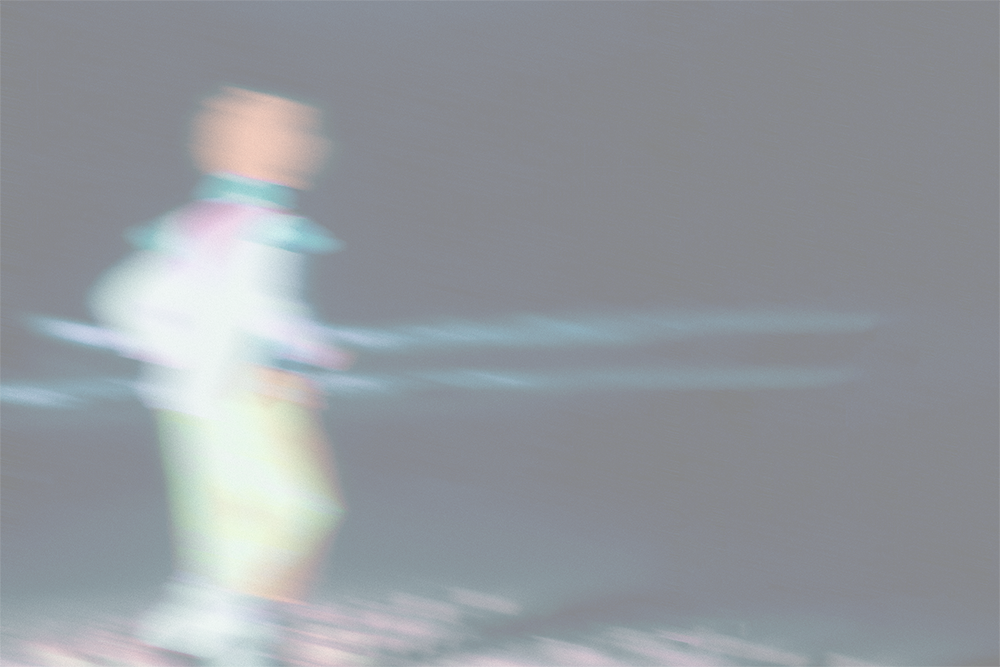
Funny Harm is a docu book structured around an inherited archive belonging to an estranged grandfather. The materials left behind reveal he ran a camp at a secret beach house. Camp life was centered around a number of practices focused on maximizing human potential. Early readings have encompassed a range of theories, of the man, his methods, and the camp’s mission. None are right; none are wrong. If you would like to be invited to join in please submit a request. The following is an edited correspondence with the author that addresses interpretations and reader feedback.
You write that the feedback so far solicited ‘nothing good’. Don’t lose sleep (although it seems like you have already lost a lot!). You listed a number of the theories. Let’s go through some of them. While Satanism and cults read scary, these conclusions seem based surface interpretation of photographic documentation and symbology. Looking through the archival materials in your draft, it’s not possible to weave a coherent narrative of demonology or magick. Much of what exists in the popular consciousness isn’t representative anyway. Essentially a misreading of a misreading. The idea, as much I really really like it, that the grandfather was a ‘benevolent serial killer’ who took vengeance on those that had wronged him or the enablers of a corrupt and unjust society is a stretch (although the preface seems to imply that too?)
The Satanic panic analysis is a different take. Related, but more politicalized and relevant to the period (when I assume these events took place?). Fearful of a witch hunt and ‘hunt and capture ideology’, I can see the attraction to a certain demographic of a transformational environment (and all that promises). Unconventional people taking flight and retreating into the camp environment. That is possible. A little like communes of the 60’s. Likeminded people coming together at the margins.
There might be something in the idea that the rituals are a precursor to upstate Ayahuasca ceremonies. I could see a Merry Prankster element to the camp that lent itself to experimentation with altered states. Some of the images do have a hallucinatory quality and it wouldn’t be a stretch to imagine many of the parties that were captured were fueled by drugs and alcohol. Maybe acid was on the menu (or mushrooms, based on the tea-drinking?). Although I don’t know if these practices were institutionalized, they might have just happened organically, as a haptic energy.
Until your email I knew nothing of ‘sacred clown’ practices and phenomena. Crazy stuff. And appealing. Is the idea that the sacred clown is imbued with certain ‘sacred’ qualities and worshipped, or that people become ‘sacred clowns’ through a rite/ritual/ceremony. One thing I did think noteworthy was that the word clown is not mentioned in any of the texts or notebooks.
Shadow and mask play is totally possible. The Greeks practiced theatrical interpretation of characters with masks. This could be the source of that form of therapeutical practice? Have you tried any of the methods? You allude to getting drawn into the material. I wasn’t sure if that meant you had started to experiment. Certainly, see how it’s tempting. There is definitely method in the madness. Who doesn’t yearn to be someone else?
While unconventional there did seem to be several psychodynamic practices at play. You mentioned the human potential movement, the Hoffman Process, and Synanon (particularly “The Game”). Yes. There is an element of all of them in the notebook entries. There are others, too. Such as Janov’s primal scream therapy, I dug this quote out , “So many of us experience tension that we have come to believe it is just one of the exigencies of being human. I am sure this is not the case. Unfortunately, however, a number of psychological theories have based their suppositions on the inevitability of tension”. The number of sketched screaming heads, the acts, and an emphasis on ‘reliving’ leads me to believe that elements of Primal Scream were practiced (the timeline of when this thinking was popular holds-up too). I used to be more familiar, and is another alleyway to explore, but the Jungian exploration of shadow assimilation and Wicca might uncover some fertile thinking. I could go on, touching further on what you outlined, but would prefer to pick this up in the form of a discussion.
The idea that you subconsciously arranged the archive as a manifesto on COVID-19 culture wars is brilliant. The whole mask vs. face narrative does have a left/right vibe. It is more believable than some of the other theories!
One thing I do want to address, is that the participants (aren’t they referred to as followers?), were vulnerable and lost people being manipulated or taken advantage of in the pursuit of one man’s power. Maybe it is just my general optimism and faith in humanity, but I do not think this is the case (as is the case that I don’t entertain the ‘evil’ scenarios you shared). These are willing participants looking for change. Yes. It’s a different way of evolving the psyche and self, but I don’t find that off-putting (I am not saying you do, the contrary), it’s liberating. Wellness and mental health are a cultural phenomenon now (and big business), and no doubt the followers at the camp would have found it equally weird that people now obsess over a small electronic device indulging in a range of practices: doom scrolling; feed feeding (what I am currently exploring in my research on social media, particularly Tik Tok); managing mindfulness; swiping; and being enslaved to notifications. On a surface level, fun and frolicking with friends on a beach is much healthier.

